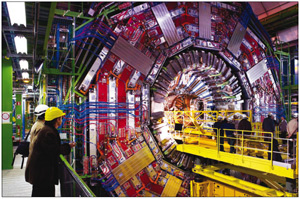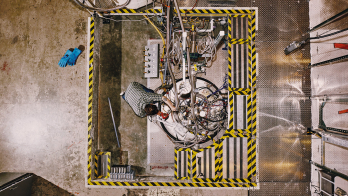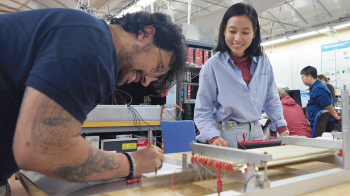The world’s largest silicon tracking detector is now in its final location in the CMS detector at CERN. This completes the installation of sub-detectors inside CMS’s huge solenoid magnet, which was lowered into the experiment’s cavern on the LHC ring on 28 February last year.

With a total surface area of 205 m2, the CMS Silicon Strip Tracking Detector is the largest detector of its kind ever constructed. Its sensors provide 10 million individual detection strips, each of which is read out by one of 80,000 custom-designed microelectronics chips. The silicon sensors are precisely assembled on 15,200 modules, which are in turn mounted on an extremely low-mass carbon fibre structure that maintains the position of the sensors to less than 100 μm. They will allow the charged particles that are produced in the LHC’s collisions at the heart of the detector to be tracked with a precision of better than 20 μm.
The overall assembly of the silicon tracking detector began in December 2006 and was completed in March 2007. All of the systems were then fully commissioned, with 20% of the full detector operating over several months, during which it recorded 5 million cosmic-ray tracks. This commissioning demonstrated that the detector fully meets the experiment’s requirements.
Finally, in the early hours of 13 December the detector began its journey from the main CERN site to the site of the CMS experiment near Cessy, France. Later that day it was lowered 90 m into the cavern. Installation began on 15 December and was concluded the following morning.
More than 500 scientists and engineers from 51 research institutions worldwide have contributed to the success of the project. These institutions are located in Austria, Belgium, CERN, Finland, France, Germany, Italy, Switzerland, the UK and the US.








